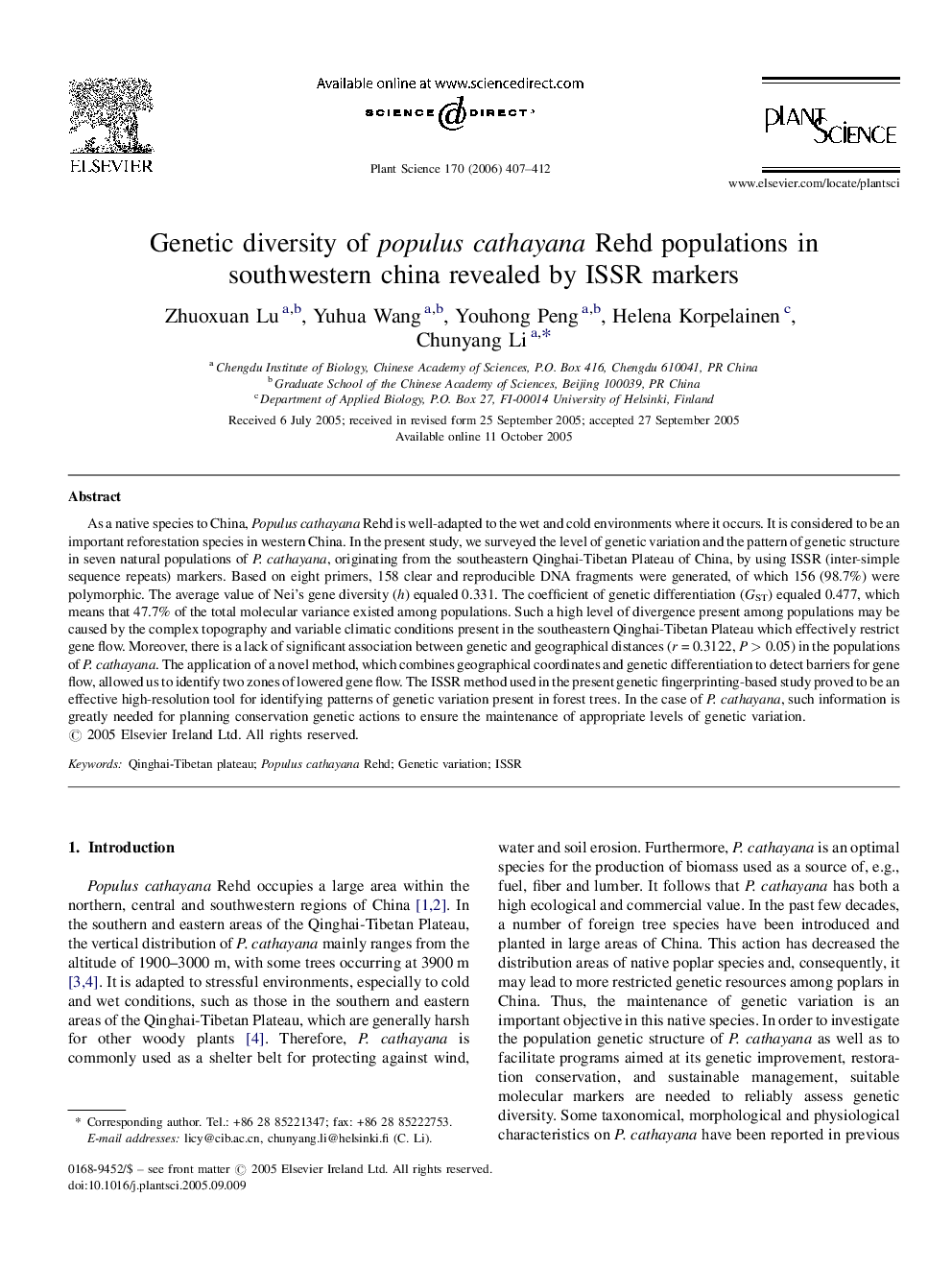| Article ID | Journal | Published Year | Pages | File Type |
|---|---|---|---|---|
| 2018639 | Plant Science | 2006 | 6 Pages |
As a native species to China, Populus cathayana Rehd is well-adapted to the wet and cold environments where it occurs. It is considered to be an important reforestation species in western China. In the present study, we surveyed the level of genetic variation and the pattern of genetic structure in seven natural populations of P. cathayana, originating from the southeastern Qinghai-Tibetan Plateau of China, by using ISSR (inter-simple sequence repeats) markers. Based on eight primers, 158 clear and reproducible DNA fragments were generated, of which 156 (98.7%) were polymorphic. The average value of Nei's gene diversity (h) equaled 0.331. The coefficient of genetic differentiation (GST) equaled 0.477, which means that 47.7% of the total molecular variance existed among populations. Such a high level of divergence present among populations may be caused by the complex topography and variable climatic conditions present in the southeastern Qinghai-Tibetan Plateau which effectively restrict gene flow. Moreover, there is a lack of significant association between genetic and geographical distances (r = 0.3122, P > 0.05) in the populations of P. cathayana. The application of a novel method, which combines geographical coordinates and genetic differentiation to detect barriers for gene flow, allowed us to identify two zones of lowered gene flow. The ISSR method used in the present genetic fingerprinting-based study proved to be an effective high-resolution tool for identifying patterns of genetic variation present in forest trees. In the case of P. cathayana, such information is greatly needed for planning conservation genetic actions to ensure the maintenance of appropriate levels of genetic variation.
